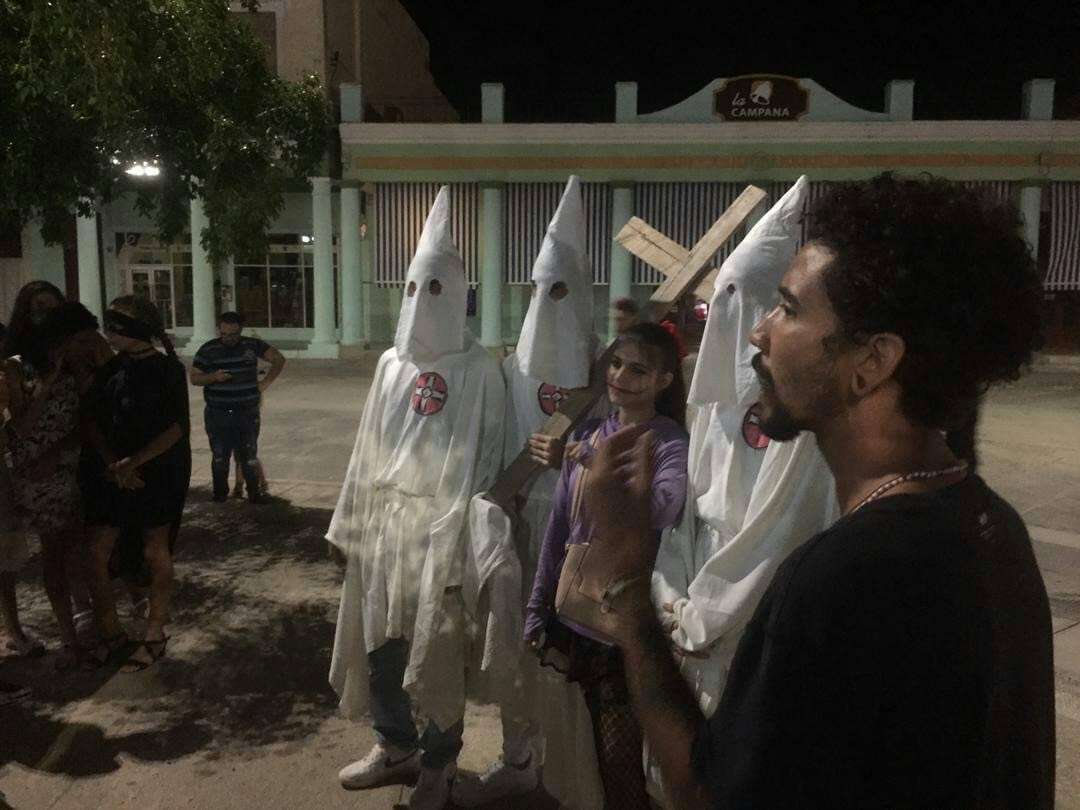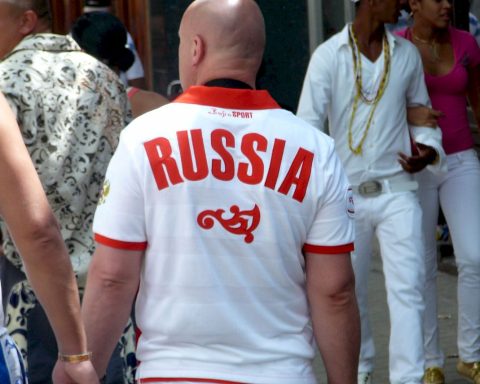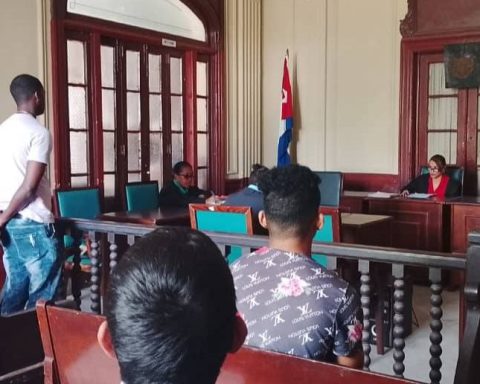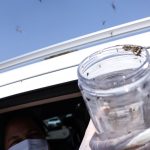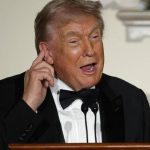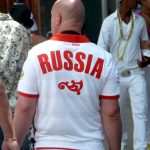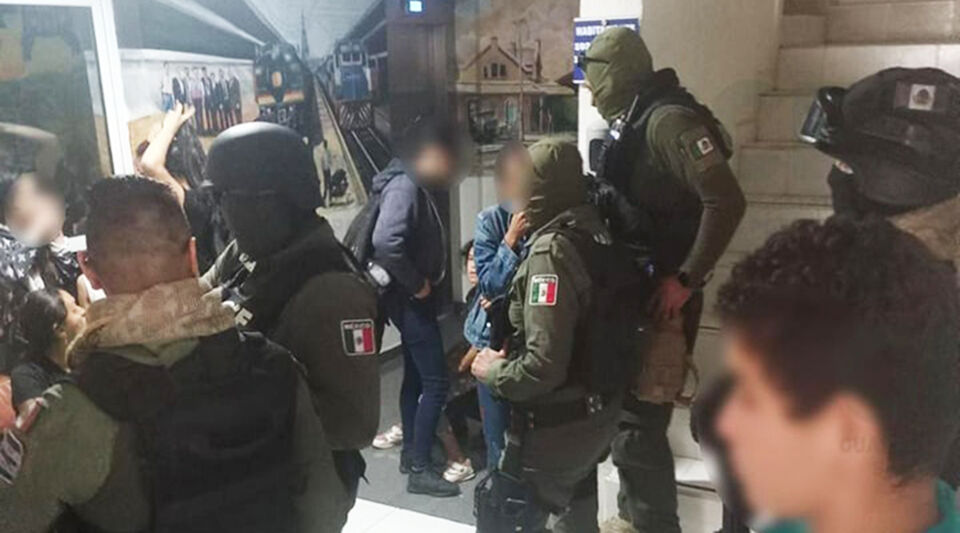Three figures appear in the photo dressed in all the paraphernalia of the Ku Klux Klan (KKK): hoods and white robes, and even the insignia – clearly visible – of the terrorist organization. They also carried a large cross. They say they arrived in the park in the middle of the night, asking: where are the blacks?
They also say that they had gone out to celebrate Halloween.
They assure that the events occurred on October 28. But it’s all very confusing. Everything except the photo. That it was not taken in a town in Mississippi but in the Calixto García park in the city of Holguín, in Cuba.
The next day the photograph was already walking Internet. On the island, the Aponte Commission of the UNEAC issued a disapproving statement, which was quickly joined by the journalist Pedro de la Hoz with a brief note in the newspaper Granma. Other comments appeared on official and non-governmental platforms on the island; while in the diasporic community the expressions of condemnation were not long in coming.
Between one and the other, comments from readers who wonder if the reaction to these events is not extremist and exaggerated. I would say, instead, that its real nature and scope have not yet been properly understood; and that minimizing them fertilizes the ground for the emergence of new racist incidents. I also think that it is not beneficial for the health of any society to interpret what happened as an extraordinary event, unrelated to national and hemispheric history and reality (not just the United States). Racism is never accidental or individual.
Many of us who, despite the avalanche of communiqués, articles and claims of the application of criminal rigor on KKK figurines in Holguin, remain overwhelmed by an all-too-familiar feeling of sadness and hopelessness. There are those of us who even feel a certain fear: how long will we have to wait for Cubans who, like the boys who went out to the park dressed in KKK uniform to ask about blacks, go a little further? It can happen at any time, since incidents like this are neither unprecedented nor do they occur exclusively in specific spaces.
The various manifestations of racism cross all the coordinates of society: it creeps from the streets of the center of the country to the luxury clubs and restaurants of Havana; a local doorman blurts it out and by extension the owner, if he allows his attitude; it is read in the press and heard on the radio; It is sung by reggaetoneros and languid ballad performers; you receive it without mercy from your neighbor, from friends, from any lover, from any member of the family; the same on the beach, in the cinema, in a hospital or school, in a queue, a Santeria ceremony, a bus or a private taxi, in hotels and airports; inside and outside the island.
Remember that, in addition to other occasions in which KKK costumes have been chosen by some on Halloween night, six years ago, before the celebration of Halloween became popular in Cuba, a graffiti appeared on a wall in El Vedado announcing , “Death to Blacks”, accompanied by a swastika. Explicit expressions of anti-black racism abound in Cuban public life, but the irruption of young people dressed as the KKK in the streets increases the horror.
The fact cannot in any way be interpreted as childishness, a game, an unfortunate consequence of the celebration of Halloween. It is not the result of ingenuity or ignorance, since a very conscientious effort is required to procure today and in Cuba —where it is not at all easy to obtain the most essential products— such particular details of the KKK dress as its historical monograms. And it is not at all comparable to try to scare anyone on the street with a Frankenstein costume than to frighten – if that is what the intention of the masked men was limited to, which has not yet been clarified – only black people. Don’t forget, they were looking for us: “Where are the blacks?”
More importantly, Halloween may be an imported holiday, but racism is not. Taking advantage of the racist event to stop to criticize Halloween —almost as much or more than racism— cannot be healthy, nor does it show respect towards black Cubans. Halloween was not the cause, just the racist pretext used by young people to expose their ideology and instigate terror. Well, the KKK is a terrorist organization.
The three boys from Holguín —whether or not they officially belong to a group associated with the KKK— have, in fact, achieved the objective of the original violent organization since, I insist, we black men and women are appalled that actions like this and worse can keep happening. Fear overtakes us and our fear is reinforced because we do not see effective solutions on the horizon.
They demand in press releases and articles published here and there the application of judicial sanctions against these young people. Let’s wait for the sentences to arrive. Maybe it will happen. But we know that it will not be enough.
It is necessary to understand that racism is not combated by implementing specific and isolated measures in some specific area of Cuban life. Racism is structural and requires hard and radical work that brings us all together, those inside and those outside the island —I repeat—, to transform everything that, in society, culture, history, politics, economics, enables the survival of racism.
We know that in an early speech, in March 1959, Fidel Castro expressed his concern that racial disagreements would undermine the consensus he then expected from Cuban society, during his first days after the revolutionary triumph: “We are a small people, we need all of us from each other, we need the effort of all, and we are going to divide ourselves now between whites and blacks? (….) What would that serve if not to weaken the nation, to weaken Cuba?». Fidel Castro’s concern in those days can be understood. He did nothing but continue with identity interpretation policies already implemented, since the 19th century, by the independence leaders and maintained throughout the Republic.
From one government to another, it has been considered essential to maintain national unity to the detriment of racial identification. The usual Martian phrase has not ceased to be repeated in every Cuban environment: “Man is more than white, more than mulatto, more than black.” But who is that man? What are the attributes of him? Are they perhaps those that society commonly recognizes black people? In any case, no cohesive effort based on ignorance of the reality of each individual is destined to prosper. Cuba has never been monolithic. Neither is his story.
I believe then that it is already essential to seriously deal with the education of Cubans regarding racialization in the Americas. Racism is not an exclusive phenomenon of one nation or another. In particular, anti-black racism in the Americas, despite its particularities in one country or another, depending on the type of colonization experienced and a complex web of economic, historical, ideological, cultural and geopolitical factors, is essentially the same. Its origins converge in the kidnapping and dehumanizing transplant of some thirteen million Africans. Its reproduction through four centuries is based on the durability of white supremacy and Eurocentric thought in our societies, from one end of the continent to the other.
You have to understand that the of mixed race, as a presumed Cuban essence, it is an ideological construction. (In short, every essence is). It is not denied that, genetically and culturally, we are a hodgepodge; but the conceptualization of that mix as an identity essence responds to an ideological architecture that has its origins in the dawn of the nation.
It is necessary to demystify the supposed essential and ontologically transformative value of miscegenation. It must be recognized that on occasions —possibly the majority— identifying oneself as mestizo implies the obliteration of what is black, that is, not being black, denying it. “Pasar for whites”, he wrote already in other item, is part of the national character; it is perhaps more essential to what is Cuban than miscegenation itself.
“Passing for whites”, “advancing the race”, note well, is not the same as being mestizo. It includes the racial orientation, the desire and the condemnation of the black. Miscegenation is not only the harmonious fusion of cultures: it is not only jazz, filin, and the entire rosary of national cultural production that with little skill is tried to place as a shield against racism. As if racism were not also a main factor in Cuban history, culture and society.
But, to fully understand these not-so-dark subtleties, it is necessary to approach our history. We deserve another story. Or, rather, we deserve access to the entirety of our history.
Fortunately, that other story is produced that should not take so long to reach the schools of the island, infiltrating the old teaching manuals that do not offer us all the history that it is our right to know. Barely a couple of years after Fidel Castro’s speech mentioned above, the black historian Walterio Carbonell wrote that fundamental book for our historiography, How the national culture arose, where he tried to induce necessary rereadings, exhorting to consider the racist attitudes of some prominent figures of the Cuban historical and identity discourse.
If Carbonell were read in Cuban schools and universities, perhaps we would be able to get closer to the national heroes with a more respectful attitude towards the current Cubans: blacks and whites. It would be understood, for example, that the role of José Antonio Saco, Francisco Arango y Parreño and José de la Luz y Caballero in the ideological foundation of what is Cuban is strongly influenced by their aversion to blacks. For the Marxist who, from his youth and long before 1959, was Walterio Carbonell, the revolution was obliged to review history from a perspective that directly examined racism at the origin of the idea of what was Cuban. Reconstructing the new society, which advocated racial equality, starting from the nation’s racist ideologues, constituted, in his opinion, a departure from Marxist doctrine.
Harshly criticized by the authorities since the 1960s, his work was censored. Only in 2005 (and in 2020) was it reissued How the national culture arose; but his message remains scarcely acknowledged. Even when I finished my studies at the University of Havana, in the mid-1990s, I was unable to find Carbonell’s book. I can’t help but wonder what Cuba would be like today if, as children, we had had access to that type of disturbing, demystifying history, which is not conclusive or seeks unanimity, but rather opens paths towards self-reflection.
Where are the blacks? They say the masked boys under KKK clothes asked. I return to the photo on the Internet and without difficulty I imagine that the hooded men could be my son’s age. I then remember the girl I was thirty years ago. I was going with my best friend, Susana, on a journey through Camagüey and Holguín, where her paternal and maternal families come from. Susana has very white skin, green eyes, light brown hair: outside of Cuba, if she doesn’t open her thin lips, they don’t recognize her as Cuban. We used to go out at night to hang around the central park —I suppose that in Holguín it was the same “Calixto García” that we are now talking about. I remember it as a quiet park, but I was told that was where we were supposed to be that night. Also, they warned me, the park had a precise distribution, the result of custom: there was a corner for blacks, another for homosexuals, and so on… I can’t remember more. I was going with my white friend and her cousins, but if she had been alone, she would have had to accept rules that she didn’t understand. I could only understand that those who had my skin color were assigned a certain space; that segregation, which was then spoken of as a “leftover from the past” or a capitalist calamity, still prevailed in that park in Holguin.
That happened in the late eighties. Now, generations later, young people arrive at one of the corners of the same park, the one formed by Libertad and Martí streets, dressed as Ku Klux Klan knights.
Tomorrow, then, what else can happen?
